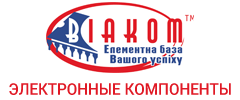Збирач потоків
Renesas Unveils 650 V GaN FETs for Power Conversion
Ayar strengthens leadership team and expands global presence to accelerate high-volume co-packaged optics
onsemi to establish wide-bandgap materials research center at Stony Brook University
Microchip partners with Delta on silicon carbide solutions for power management
AXT board member Christine Russell passes away
🤝📚 НАЗК пропонує чотири нові вакансії: антикорполітика, просвіта, дизайн та роз’яснювальна робота
🤝📚 До команди Управління реалізації антикорупційної політики у сферах економіки та правопорядку шукають спеціаліста відділу реалізації політики у сфері правопорядку.
Дві вакансії відкрито в Управлінні просвітницької роботи та навчальних програм:
Nuvoton Technology Presents M-PESTI target MCU based on OCP DC-MHS, eBMC nu.RoT, RoT on Microcontroller, and Multi-nodes based on BNC-SCM applications
Nuvoton will emphasize cloud computing applications at OCP APAC 2025. Nuvoton will showcase cloud computing silicon solutions for M-PESTI, eBMC nu.RoT, Multi-nodes controller, and computing/server ASIC/MCU. The OCP APAC Summit 2025 will take place from August 5-6, 2025, in Taipei, Taiwan.
MCU TF5103Y: M-PESTI target MCU based on DC-MHS
The TF5103Y is a Cortex-Arm M0 32-bit microcontroller that can run the M-PESTI target solution. The small package QFN32 4x4mm is easy to design in the limited layout space of a sideband card, especially in M-SDNO or 1U module systems for rack systems. The M-PESTI target solution on TF5103Y passed the Intel server lab and is already in mass production. And this solution can be compatible with Altera and Lattice systems.
eBMC NCT6694B: nu.RoT builds a security core for your system
ASRock, in collaboration with Nuvoton, has unveiled the world’s first lightweight server motherboard powered by the Nuvoton eBMC (NCT6694B) chip, designed to build a secure and trusted system core. The board includes many functions, such as enabling remote management, system monitoring, and BIOS updates. Tailored for cloud and edge applications, it delivers a high-efficiency and stable security framework. With the u.RoT architecture reinforces a robust trust chain from system boot to runtime, making security the default.
Multi-nodes: Powerful management framework based on BMC-SMC Integration
Considering that the server system architecture is becoming increasingly complex, we now face some problems that require discussion for Multi-Node Scalability to resolve them. For example, the number of cores in Host CPUs is growing, which means platforms are moving from dual/quad sockets (shared memory) to multi-node solutions. Furthermore, OCP partners are looking forward to the Multi-node management on following DC-SCM3.0.
With Nuvoton’s BMC and SMC solution, the USB tunnels over MCTP are ready for UART/SOL, MMBI/ VW, Telemetry, etc.
MCU M2354: RoT on Microcontroller
NuMicro M2354 is a 32-bit Arm Cortex-M23 microcontroller featuring TrustZone technology. Supporting compact WLCSP49 package, it is ideal for resource-constrained devices that cannot accommodate a full TPM. M2354 integrates Secure Boot with DICE architecture in Mask ROM and is in mass production, delivering a lightweight, deployable Root of Trust for modular server and IoT systems.
The post Nuvoton Technology Presents M-PESTI target MCU based on OCP DC-MHS, eBMC nu.RoT, RoT on Microcontroller, and Multi-nodes based on BNC-SCM applications appeared first on ELE Times.
Microchip Expands Its Line of High-Speed Digital Signal Controllers
FBH exceeds 1mW far-UVC LED CW output from single fiber
FBH exceeds 1mW far-UVC LED CW output from single fiber
Quinas wins ICT Start-up category of 2025 WIPO Global Awards
Cadence Races First to Release LPDDR6/5X Memory IP for AI Infrastructure
Fraunhofer ISE develops indoor photovoltaics with over 40% efficiency
КПІ ім. Ігоря Сікорського співпрацюватиме з FANUC Ukraine LLC
🇺🇦🇯🇵 КПІ ім. Ігоря Сікорського співпрацюватиме з FANUC Ukraine LLC — офіційним представництвом японської корпорації FANUC, яка є одним зі світових лідерів у сфері промислової автоматизації
Elucidation of scattering mechanism of 2DEG in PAMBE-grown ScAlN/GaN heterostructure
Elucidation of scattering mechanism of 2DEG in PAMBE-grown ScAlN/GaN heterostructure
Vermont Tech Hub’s semiconductor lab awarded $3.4m from Northeast Microelectronics Coalition
Vermont Tech Hub’s semiconductor lab awarded $3.4m from Northeast Microelectronics Coalition
Electronic water softener design ideas to transform hard water

If you are tired of scale buildup, scratchy laundry, or cloudy glassware, it’s probably time to take hard water into your own hands, literally. This blog delves into inventive, affordable, and unexpectedly easy design concepts for building your own electronic water softener.
Whether you are an engineer armed with blueprints or a hands-on do-it-yourself enthusiast ready to roll up your sleeves, the pointers shared here will help you transform a persistent plumbing issue into a smooth-flowing success.
So, what’s an electronic water softener (descaler)? It’s a simple oscillator circuit tailored to create a magnetic field around a water pipe to reduce the chances of smaller deposits sticking to the inside of the pipes.
Not new, the concept of water conditioning dates back to the 1930s. Hard water has a high concentration of minerals, the most abundant of which is calcium particles. The makeup of deposits leads to the term hard water and reduces the effectiveness of soaps and detergents. Over time, these tiny deposits can stick to the inside of pipes, clog filters, faucets and shower heads, and leave residue on kettles.
The idea behind the electronic/electromagnetic water softener is that a magnetic field around the water pipe causes calcium particles to clump together. Such a system consists of two coils wound around the water pipe with a gap between them.
The circuit driving them is often a high frequency oscillator that generates pulses of 15 kHz or so. As a result, large particles are formed, which pass through the water pipe and do not cling to the inside.
Thus, the electronic water softener operates by wrapping coils of wire around the incoming water main to pass a magnetic field through the water. This causes the calcium in the water to stay in solution, thereby bottling it up from clinging to taps and kettles. Also, the impact of electromagnetic flux makes the water physically soft as the magnetic flux breaks the hard molecules and makes it soft by nature.
Below is a visual summary of the process.

Figure 1 The original image was sourced from Google Images and has been retouched by author for visual clarity.
Most electronic descalers typically operate with two coils to increases the time for which the water is exposed to the electromagnetic waveform, but a few use only one coil.

Figure 2 Here is how electronic descalers operate with two coils or one coil. Source: Author
A quick inspection of the most common water softener circuits found on the web shows that the drive frequency is about 2 to 20 kHz in the 5- to 15-V amplitude range. The coils to be wound outside the pipe are just about 20- to 30-turn inductors made of 18 to 24 SWG insulated or copper wire.
It has also been noted that neither the material of the water pipe (PVC or metal) nor its diameter has a significant effect on the efficiency of the lime solver.
When I stumbled upon a blogpost from 2013, it felt like the perfect moment to explore the idea more deeply. This marks the beginning of a hands-on learning journey—less of a formal project and more of a series of small, practical experiments and functional blueprints.
The focus is not on making a polished product, but on picking up new skills and exploring where the process leads. So, after learning from several sources about how electronic water softeners work, I decided to give it a try.
The first step in my process involved developing a universal (and exploratory) driver circuit for the pipe coil(s). The outcome is shown below.

Figure 3 The schematic shows a driver circuit for the pipe coil. Source: Author
Below is the list of parts.
- C1 and C2: 470 uF/25 V
- C3: 1,000 uF/25 V
- D1: 1N4007
- L1: 470 uH/1 A
- IC1: MC34151
Note that the single-layer coil L2 on the 20-mm diameter PVC water pipe is made of around 60 turns of 18AWG insulated wire. The single-layer coil on pipe has an inductance of about 20 uH when measured with an LCR meter. The 470 uH drum core inductor L1 (empirically selected part) throttles the peak current through the pipe coil L2.
A single-channel MOSFET gate driver is adequate for IC1 in this setup; however, I opted for the MC34151 gate driver during prototyping as it was readily on hand. Next comes a bit different blueprint for the pipe coil driver.

Figure 4 Arduino Uno was used to drive the pulse input of the pipe coil driver circuitry. Source: Author
To drive the pulse input of the pipe coil driver circuitry, an Arduino Uno was used (just for convenience) to generate a sweeping frequency between 500 Hz and 5 kHz (the adapted code is available upon request). Although selected without a specific technical justification, this empirically optimized range has demonstrated enhanced performance in some targeted zones.
At this stage, opting for a microcontroller-based oscillator or pulse generator is advisable to ensure scalability and facilitate future enhancements. That said, a solution using discrete components continues to be a valid choice (an adaptable textbook pointer is provided below).

Figure 5 An adaptable textbook pointer highlights the above solution. Source: Author
Nevertheless, the setup ought to be capable of delivering a pulsed current that generates time-varying magnetic fields within the water pipe, thereby inducing an internal electric field. For optimal induction efficiency, a square-wave pulsed current is always advocated.
The experiment is still ongoing, and I am drawing a tentative conclusion at this stage. But for now, it’s your chance to dive in, experiment, and truly make it your own.
 T. K. Hareendran is a self-taught electronics enthusiast with a strong passion for innovative circuit design and hands-on technology. He develops both experimental and practical electronic projects, documenting and sharing his work to support fellow tinkerers and learners. Beyond the workbench, he dedicates time to technical writing and hardware evaluations to contribute meaningfully to the maker community.
T. K. Hareendran is a self-taught electronics enthusiast with a strong passion for innovative circuit design and hands-on technology. He develops both experimental and practical electronic projects, documenting and sharing his work to support fellow tinkerers and learners. Beyond the workbench, he dedicates time to technical writing and hardware evaluations to contribute meaningfully to the maker community.
Related Content
The post Electronic water softener design ideas to transform hard water appeared first on EDN.





